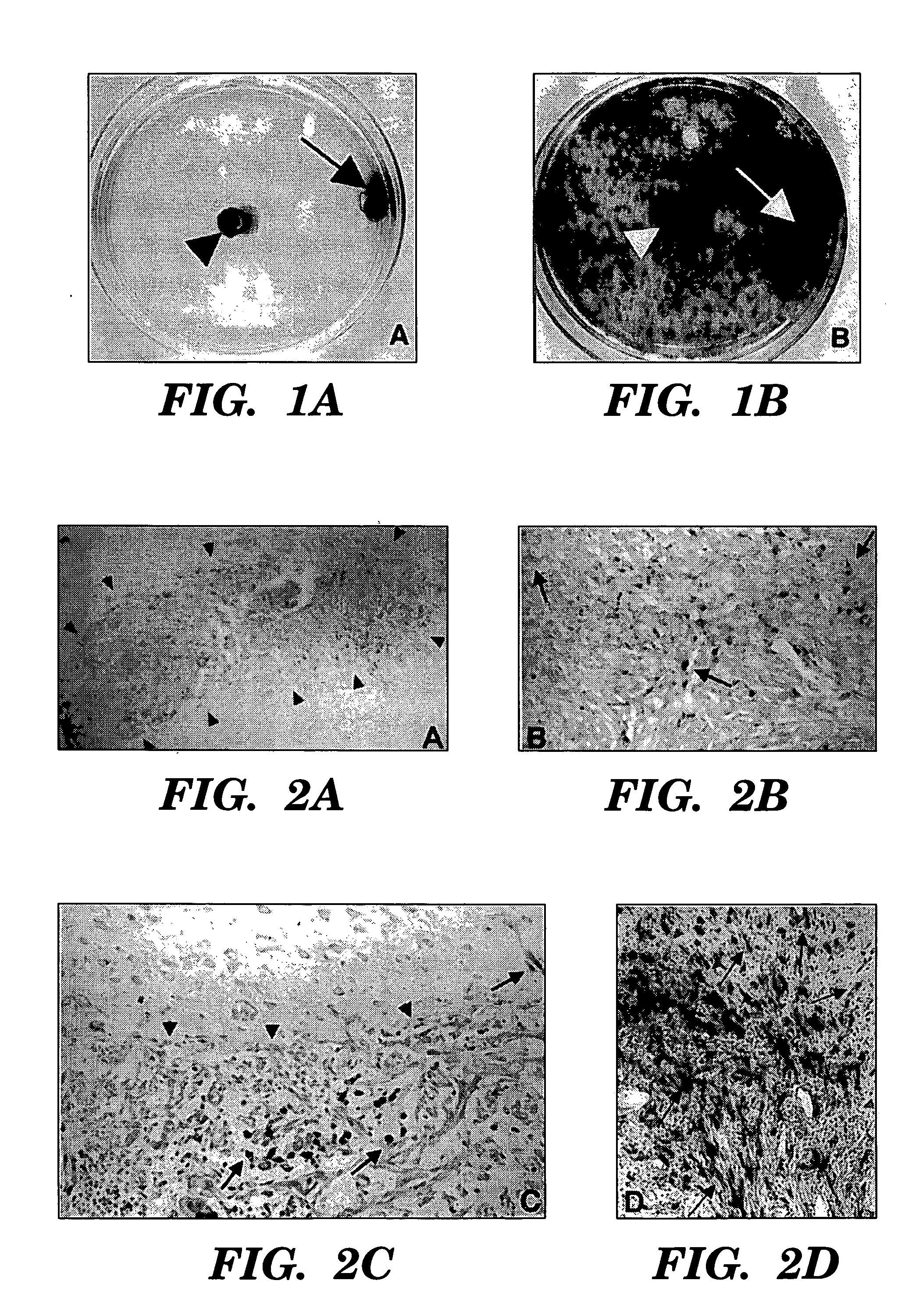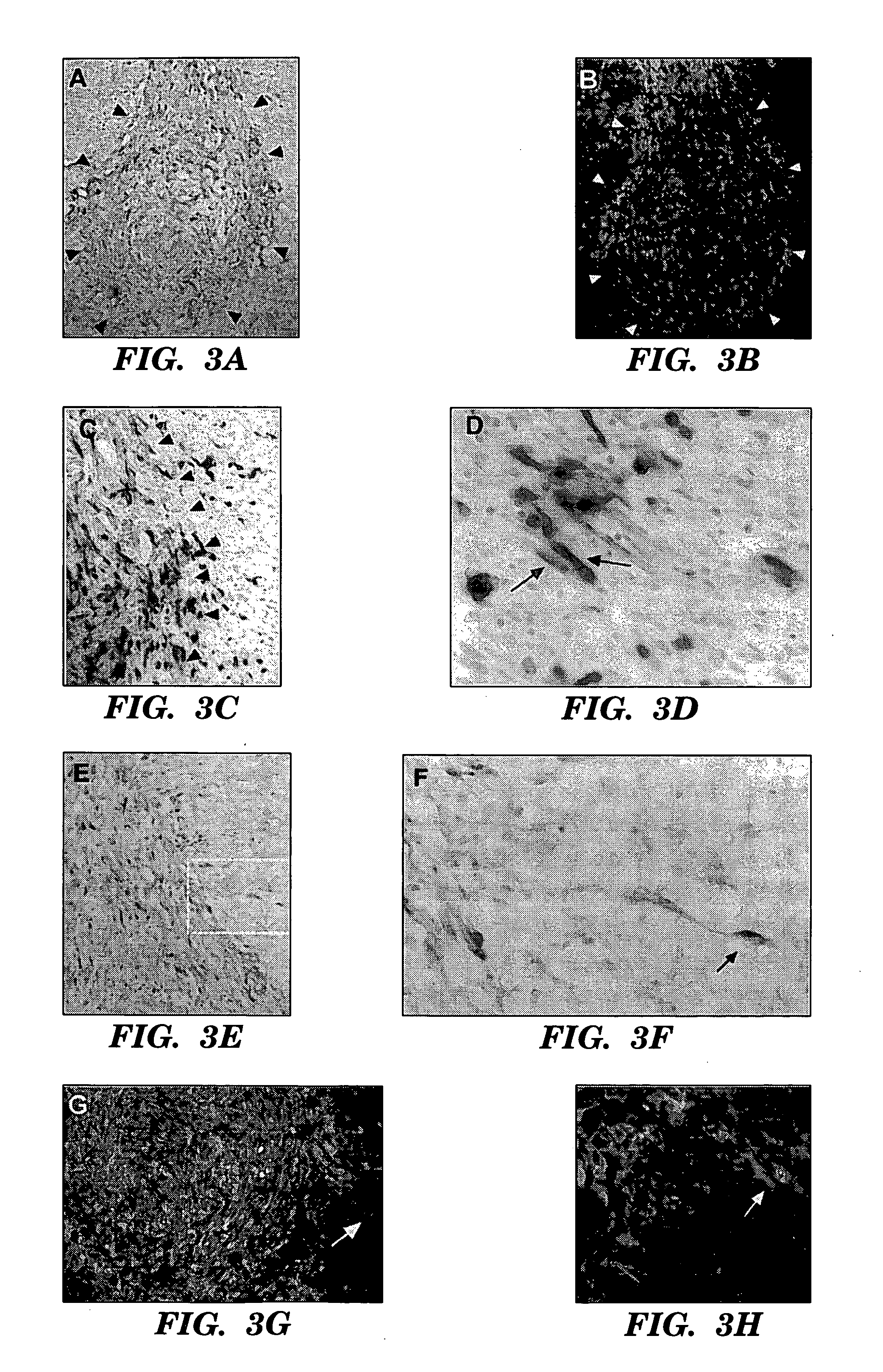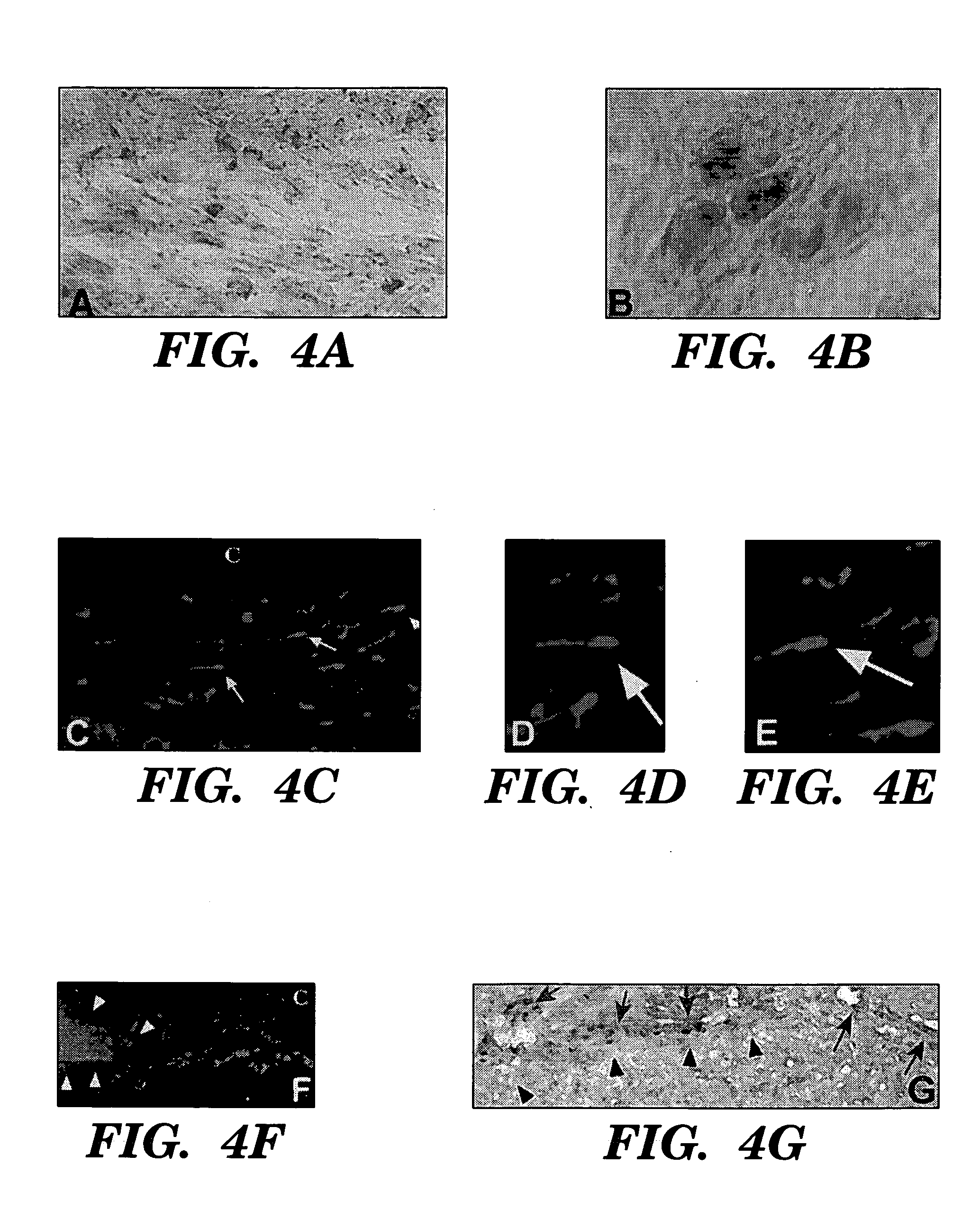Engraftable neural progenitor and stem cells for brain tumor therapy
a neural progenitor and brain tumor technology, applied in the field of gene therapy, can solve the problems of large distribution of viral vector-mediated genes to large regions, and the number of cells typically in need is often disappointingly limited
- Summary
- Abstract
- Description
- Claims
- Application Information
AI Technical Summary
Problems solved by technology
Method used
Image
Examples
example 1
Migratory Capacity of NSCs in Culture
[0036] To determine properties of the NSCs in association with glioma cells, studies were initially preformed in culture comparing the relative migratory capacity of NSCs (clone C17.2) to fibroblasts (the lacZ-expressing TR-10 fibroblast cell line) when co-cultured with glioma cells. C17.2 and TR-10 cells were maintained in Dulbecco's modified Eagle's medium (DMEM; Mediatech, Washington, D.C.) supplemented with 10% fetal calf serum (FCS; Sigmiia, St. Louise, Mo.), 5% horse serum (HS;Gibco), 1% Glutamiiie (2 mM; Gibco), 1% penicillin / streptomycin (Sigma). CNS-1 cells were stably transduced with the PGK-GFP-IRES-NeoR retroviral vector construct to express green fluorescent protein (GFP) as previously described (ref. Aboody-Guterman et. al, 1997), and maintained in RPMI-1640 (Bio Whittaker) supplemented with 10% FCS and 1% penicillin / streptomycin (Sigma). Cell structure studies were performed in 100 mm petri dishes under standard conditions: humidi...
example 2
Transgene-Expressing NSCs Migrate Throughout and Beyond Invading Tumor Mass In Vivo
[0038] To determine the behavior of clone C17.2 NSCs introduced into brain tumors, experimental animals (syngeneic adult rats) first received an implant of 4×104 D74 rat glioma cells in 1 μl injected into the right frontal lobe. Four days later, 1×105 C17.2 NSCs in 1.5 μl PBS were injected at same coordinates directly into the D74 tumor bed. Animals were then sacrificed at days 2, 6, and 10 post-intratumoral injection and cryostat sections of the brains were processed with Xgal histochemistry for β-galactosidase (βgal) activity to detect donor-derived cells and counterstained with neutral red to detect tumor cells.
[0039] Donor C17.2 NSCs were found extensively dispersed throughout the tumor within a few days, spanning an 8 mm width of tumor as rapidly as 2 days after injection (FIGS. 2A, 2B). This is a much more extensive and rapid dispersion compared to previous reports of 3T3 fibroblasts grafted i...
example 3
NSCs “Track” Infiltrating Tumor Cells
[0041] CNS-1 tumor cells were labelled by retroviral transduction with green fluorescent protein (GFP), prior to implantation, to better distinguish single cells away from the main tumor bed17. GFP-expressing CNS-1 glioma cells (3×104) in 1 μl PBS injected into right frontal lobe at stereotaxic coordinates 2 mm lateral to bregma, on coronal suture, 3 mm depth from dura. 4×104 C17.2 or TR-10 cells in 1 μl PBS injected at same coordinates directly into tumor bed on day 6. 3-4 C17.2 animals (2 BUdR labelled, 1 BUdR pulsed) and 1-2 TR-10 control animals (1 BUdR labelled). Animals were sacrificed on days 9,12, 16 and 21 post-tumor implantation. Cryostat sectioned, fixed brain tissue was stained either with β-galactosidase (C17.2 cells blue) and neutral red (tumor cells dark red) or double immunofluorescence with Texas red anti-β-galactosidase (C17.2 cells red) and FITC anti-GFP (tumor cells green).
[0042] (FIGS. 3A, 3B) parallel sections: low power o...
PUM
| Property | Measurement | Unit |
|---|---|---|
| concentrations | aaaaa | aaaaa |
| concentrations | aaaaa | aaaaa |
| concentrations | aaaaa | aaaaa |
Abstract
Description
Claims
Application Information
 Login to View More
Login to View More - R&D
- Intellectual Property
- Life Sciences
- Materials
- Tech Scout
- Unparalleled Data Quality
- Higher Quality Content
- 60% Fewer Hallucinations
Browse by: Latest US Patents, China's latest patents, Technical Efficacy Thesaurus, Application Domain, Technology Topic, Popular Technical Reports.
© 2025 PatSnap. All rights reserved.Legal|Privacy policy|Modern Slavery Act Transparency Statement|Sitemap|About US| Contact US: help@patsnap.com



